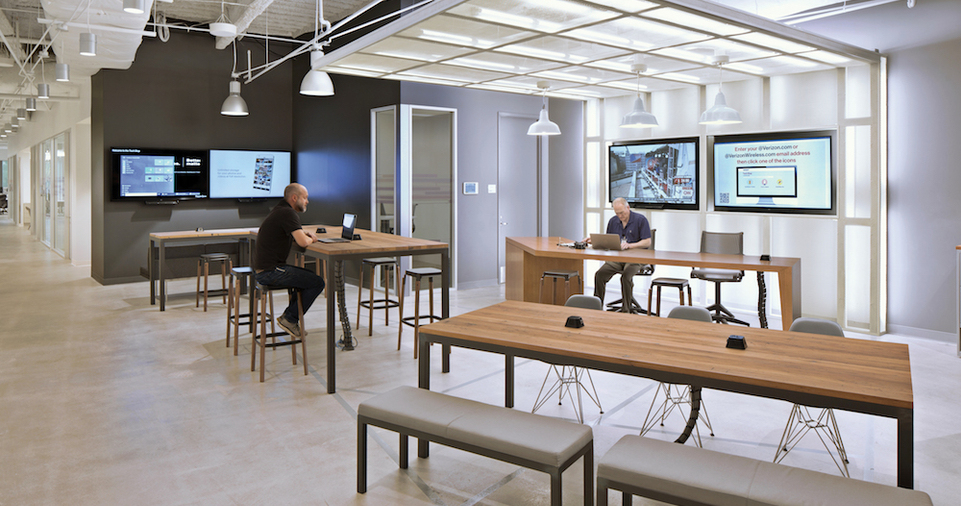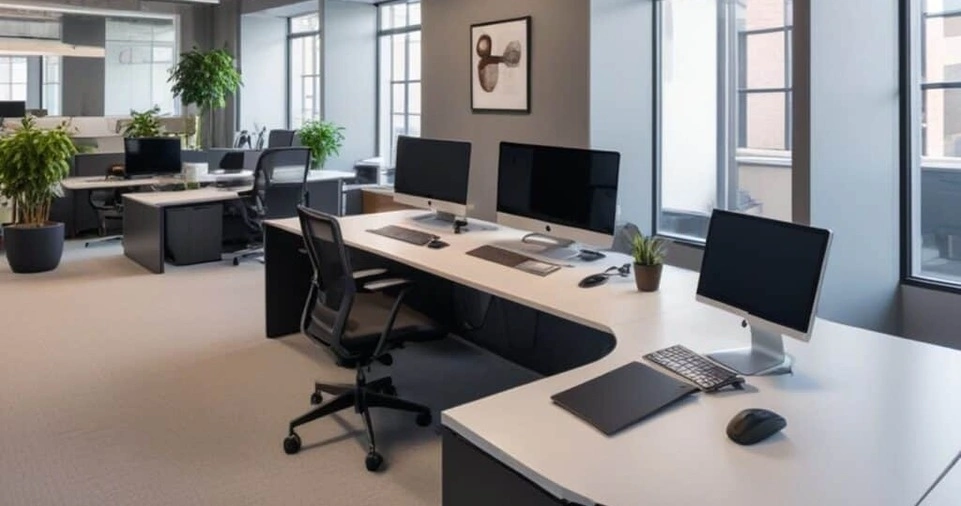In today’s fast-paced world, optimizing your workspace with technology is not just a luxury, but a necessity.
Whether you’re working from home, in a traditional office, or in a hybrid environment, leveraging the right tech tools can streamline your workflow, enhance your productivity, and help you maintain focus.
Technology, when used effectively, can transform how we approach tasks, manage our time, and collaborate with others. From cloud storage to task automation, the possibilities are endless for enhancing efficiency.
A well-structured and tech-optimized workspace allows you to reduce distractions, automate repetitive processes, and improve overall time management.
It empowers you to focus on high-priority tasks and enhances collaboration, especially in team settings.
Implementing modern tools and strategies can lead to faster completion of projects and a better work-life balance, which is crucial in today’s competitive and fast-evolving environment.
In this article, we will explore various strategies and tools that can help create a more efficient workspace with technology.
Whether you’re an individual contributor or part of a larger team, there are many ways to leverage technology for a smoother and more productive working experience.
Leverage Productivity Apps for Task Management
In a world full of distractions and multitasking demands, productivity apps can make all the difference in keeping your workspace organized and focused.
These apps help you manage tasks, set priorities, and ensure deadlines are met efficiently.
Task Management Tools: Organize Your To-Do List
One of the best ways to stay on top of tasks is by using task management tools like Trello, Asana, or Todoist.
These apps allow you to create detailed task lists, assign deadlines, and categorize your tasks according to priority.
Here’s how you can use them to enhance your efficiency:
- Trello is a flexible kanban-style board tool that lets you visualize your tasks. You can create boards for different projects, add cards for individual tasks, and move them through columns like “To Do,” “In Progress,” and “Completed.” It helps you stay organized and allows for easy tracking.
- Asana is another powerful tool that allows for more complex project management. You can break down larger projects into tasks and subtasks, assign them to different team members, and track progress. Asana also integrates with other tools like Slack and Google Drive, making collaboration seamless.
- Todoist is a simple yet effective to-do list app that helps you stay organized. With features like recurring tasks, labels, and filters, Todoist makes it easy to categorize and prioritize tasks based on deadlines or project goals.
Time Management Apps: Maximize Your Focus
Managing time effectively is crucial for a productive workspace.
Time management apps like RescueTime, Toggl, or Clockify help track the amount of time spent on various tasks and offer insights into productivity patterns.
- RescueTime automatically tracks how much time you spend on different apps and websites, providing a clear picture of where your time is going. It can also block distracting websites during specific hours, encouraging focus.
- Toggl and Clockify are time-tracking apps that allow you to manually log the time spent on various activities. They help ensure that you’re spending time wisely, and they can be particularly useful for freelancers or those who bill clients hourly.
By using productivity and time management tools, you can stay organized, set clear priorities, and focus on what matters most.
Automate Repetitive Tasks to Save Time
Technology can be a game-changer when it comes to automating repetitive and mundane tasks.
By automating certain processes, you free up valuable time to focus on more strategic or creative work.
Task Automation Tools: Streamline Your Workflow
Platforms like Zapier, Integromat, and IFTTT allow you to set up automations between different apps. These automation tools can significantly reduce manual work and repetitive actions.
Here’s how they work:
- Zapier connects your most-used apps and automates workflows without requiring you to write any code. For example, you could set up a “Zap” to automatically create a task in Asana when you receive an email in Gmail with a specific subject line. This saves you the trouble of copying information from one app to another.
- Integromat allows you to create more complex workflows, including conditional actions and integrations between apps that aren’t typically compatible. It also supports multi-step automation processes, making it ideal for businesses with complex workflows.
- IFTTT (If This Then That) is another popular automation tool that works by creating simple rules, called applets. For instance, you could set up an applet to save email attachments to your Google Drive automatically.
Macro Tools: Automate Actions on Your Computer
In addition to automating workflows between apps, you can also automate tasks on your computer using macro tools like AutoHotkey.
These tools allow you to create custom keyboard shortcuts or scripts to carry out repetitive tasks, such as renaming files, opening applications, or formatting text.
With automation, you can minimize manual work, reduce errors, and make your workspace far more efficient.
Embrace Cloud Collaboration for Seamless Teamwork

Collaborating with team members in a remote or hybrid environment has become easier with cloud-based tools.
These tools ensure that everyone is on the same page, even if you’re not working in the same location.
File Sharing and Storage Solutions
Cloud storage platforms like Google Drive, Dropbox, and OneDrive provide a centralized space where you can store documents, presentations, and other files.
These platforms allow for easy sharing and access from any device, making collaboration seamless.
- Google Drive offers real-time document editing, allowing multiple people to work on the same file simultaneously. You can also leave comments and suggestions for others to review, improving the feedback process.
- Dropbox offers an easy drag-and-drop interface for file storage and sharing. It’s particularly useful for teams that deal with large files or multimedia content.
- OneDrive integrates seamlessly with Microsoft Office apps, making it an ideal choice for teams that rely heavily on Word, Excel, and PowerPoint.
Collaborative Documents and Note-Taking
Collaborative platforms like Google Docs, Notion, and Evernote allow teams to work together in real-time on documents, presentations, and notes.
- Google Docs enables real-time editing and commenting. This makes it a go-to tool for creating and collaborating on documents, spreadsheets, and slideshows.
- Notion combines note-taking, task management, and databases in one platform. It’s perfect for organizing meeting notes, project plans, and even personal to-do lists.
- Evernote is ideal for taking and organizing notes. With its powerful search functionality and ability to sync across devices, Evernote keeps all your ideas and important information within reach.
Cloud collaboration tools help you work efficiently and stay connected with your team, regardless of where you are.
Utilize Communication Tools for Efficient Interaction
Effective communication is key to a productive workspace, especially if you’re working in a team environment.
Technology offers a wide range of communication tools that make it easy to connect and collaborate.
Messaging Apps for Team Communication
Apps like Slack, Microsoft Teams, and Discord have become popular choices for workplace communication.
These tools allow teams to collaborate on projects, exchange quick updates, and even socialize, all within one platform.
- Slack enables real-time messaging with channels dedicated to specific projects or teams. You can share files, integrate with other tools, and set up notifications to stay informed about what’s happening in your workspace.
- Microsoft Teams offers chat, video conferencing, and file-sharing capabilities, making it a comprehensive tool for collaboration. It also integrates well with Office 365 apps.
- Discord, originally designed for gamers, is now widely used by teams for its voice, video, and text communication features. It’s especially useful for informal communication or team brainstorming sessions.
Video Conferencing for Remote Meetings
With remote work becoming more common, video conferencing tools like Zoom, Google Meet, and Microsoft Teams are essential for maintaining face-to-face communication.
- Zoom is known for its stability and features like screen sharing, breakout rooms, and virtual backgrounds. It’s perfect for team meetings, webinars, and presentations.
- Google Meet is integrated into the Google ecosystem, making it a great choice for teams that use Google Workspace. It allows for seamless video calls with easy scheduling and calendar integration.
- Microsoft Teams also provides video conferencing, making it ideal for teams that already use Office 365 for collaboration.
By using the right communication tools, you can foster better teamwork, reduce misunderstandings, and ensure that projects run smoothly.
Optimize Your Workspace Ergonomics and Setup

While technology can boost productivity, it’s equally important to ensure that your workspace is ergonomically designed to reduce physical strain. Comfort plays a huge role in maintaining focus and efficiency.
Standing Desks and Adjustable Furniture
Investing in a standing desk or an adjustable desk allows you to alternate between sitting and standing throughout the day.
Studies show that standing for short periods can improve circulation, reduce back pain, and increase energy levels.
- Standing desks can be adjusted with a push of a button to switch between sitting and standing positions. Some models even come with preset height settings to save time.
- Ergonomic chairs are also essential for comfort. Look for chairs that provide lumbar support, have adjustable armrests, and promote good posture.
Dual Monitors for Increased Productivity
Using dual monitors can greatly improve multitasking efficiency. With two screens, you can keep documents open on one monitor while referencing other files, emails, or websites on the other.
This reduces the need to toggle between tabs, saving time and improving focus.
- Larger monitors or ultrawide screens are also great for professionals who work with complex data, graphics, or videos. A bigger screen gives you more space to work without the need to constantly switch between windows.
Ergonomic Accessories for Comfort
In addition to standing desks and chairs, other ergonomic accessories, such as an ergonomic keyboard and mouse, can help prevent repetitive strain injuries.
Look for keyboards with split designs or mechanical switches, which can reduce wrist strain.
Use Smart Scheduling Tools for Better Time Management
Time management is critical for staying productive, and smart scheduling tools help you make the most of your day. These tools allow you to prioritize tasks and manage your time effectively.
Calendar Apps for Scheduling
Tools like Google Calendar, Outlook, and Apple Calendar are essential for scheduling meetings, appointments, and tasks. These apps integrate with other tools, helping you organize your day effectively.
- Google Calendar allows you to set reminders for important meetings, set up recurring events, and share your calendar with others for easier collaboration.
- Outlook offers a robust calendar feature with scheduling assistant options, which helps you find available time slots for meetings.
Time Blocking Techniques
Time blocking involves scheduling specific blocks of time for different tasks or activities throughout the day. Use tools like Clockify or Toggl to implement this method.
By blocking time for specific tasks, you minimize distractions and ensure that you stay on track with your work.
ALSO READ: How to Use VPNs for Secure Browsing
Conclusion: Enhance Your Workspace with Technology
Incorporating technology into your workspace is not just about using the latest tools but about optimizing your workflow for maximum productivity.
From task management apps to time-tracking tools, the technology available today can help you stay organized, focused, and efficient.
Furthermore, integrating communication, collaboration, and automation tools can create a seamless working environment, whether you’re working alone or with a team.
By investing in the right tech tools and making thoughtful adjustments to your workspace, you can boost both your productivity and your overall well-being.
Technology can help you manage time more effectively, automate routine tasks, and create a more organized, efficient workspace, ultimately enabling you to focus on the work that truly matters.

